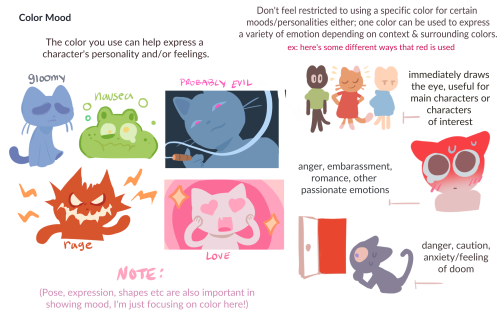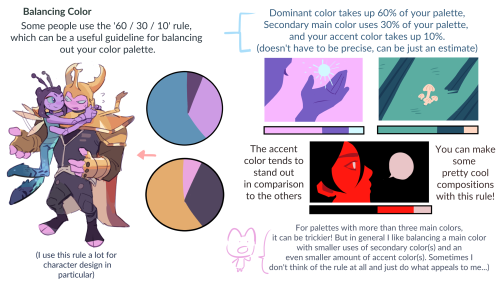
I just reblog fun facts/tipsScience, nature, geology facts etc! + art & writing tips!
67 posts
Latest Posts by donutdomain - Page 3
3 Ways to Write Scene Transitions
Moving from one scene to another in your short story or novel can be challenging. If your plot spans more than a day or a week, you've got plenty of time to cover.
How do you transition your scenes without jumping over crucial plot points or making the pacing feel rushed?
There are a few tips you can try when you're facing this problem.
1. Tease What's to Come
Let's say you've started a chapter with your protagonist encountering people they don't like while shopping at the grocery store with their exhausted two-year-old. The experience is frustrating, so your protagonist is simmering while sitting at a red light on the way home.
The main action of the chapter happens when the babysitter arrives that night, but it's only 12 o'clock in your scene. You needed your protagonist to encounter the people that annoy them to establish motivation for the action later on.
You could jump time by teasing the action itself. Your protagonist could thrum their fingers on the steering wheel and glare at the red light.
They opened their arms to the resentment churning under their skin. It sank into their bones, morphing into electricity that kept [Protagonist] plodding through their day. The red light mocked their need to take action, but they could wait.
Because when the babysitter showed up that night, they would take their revenge out on the city.
That could be a great place for a scene break or even the end of your chapter, depending on how much you've written. The reader won't mind a time jump because their interest gets piqued. They'll want to know what revenge means for that character and what will spin out from the choices they make.
2. Switch Points of View
If you're writing a 3rd person POV story with perspectives from at least two characters, you can also transition scenes by switching narrators.
While one character completes a plot-relevant action, the other could move the plot along by being a bit further in the future.
Consider something like this as an example:
Sarah's heart beat wildly in her chest as the heavy words finally fell from her lips. It was just the two of them in that park, but it had felt like the whole world had watched her admit her love for Melanie in the molten gold rays of the setting sun. All she needed now was an answer.
[Scene break symbol or the start of a new chapter]
Melanie heard Sarah's heartfelt words echo in her ears long after she had mumbled something about needing time. Time to think, to process. Sarah had been so understanding, even when she dropped Melanie off at home right afterward and skipped their usual Facetime call that night.
It wasn't until Melanie woke up the next morning in a sweat that she realized she finally had to unearth her biggest secret—she had only started the friendship with Sarah because she'd been in love with Sarah's older sister since the second grade.
You could make that time jump into however long you needed. Play with the scene set up in particular and then give the page or two to whoever loves to read your writing. They could talk about if it felt like a rushed scene or if the time jump felt right for that moment.
3. Wrap Up the Moment
Most of the time, I find myself struggling with a scene transition because the moment that I'm writing isn't finished.
Recently I was writing a scene with two friends in a wagon on their way to a new city. They have a great conversation that sparks some character development in-between plot points, but I could feel that conversation coming to a lull.
It felt like the right moment to insert a transition, but something didn't feel right.
I had to walk away from my work and come back to it to realize that I needed to wrap up the moment to move anything forward.
The solution I found was ending the conversation by making them appreciate their friendship more than before, based on what had been said, and then the protagonist ended the scene by reflecting on how they knew they could face anything in the new city with their friend by their side.
The next scene started with their wagon approaching the city walls after a night of sleeping under the stars. The reader will still understand that it took more time to reach their destination, but they don't have to read excessive details about the cold night air or hard ground under the protagonist's back to get to what they're most looking forward to—the arrival at the new city.
Nothing about that night would add anything to the plot, so dropping the overnight experience at the beginning of the sentence makes for a great transition to the next scene.
Make Your Transitions Clear
Whether you end a scene with a cliffhanger, a heartfelt moment, or by switching between points of view, your transitions should always help the plot.
You can always edit them while reworking the finished draft later or ask for beta reader opinions from the people who always love reading what you write.
An interesting fact I just learned about amethyst! It is a light-sensitive crystal, so if you keep it in direct light, the color can fade. So if you want to preserve the pigment of your amethyst, make sure to keep it out of direct lighting ☀️💜




my color tips pdf is now available ! i had a lot of fun with this, i hope you enjoy ^^
BUY HERE or HERE
I'm currently working on an animatic, could you give me any advice?
1.

2.

3.

4.

5.

I still haven’t taken any animation or storyboarding classes, but these are general TECHNICAL tips I’ve learned online and through trying to fix my own boards. Definitely practice with things your passionate about/interested as it’ll make the process so much more fun (: for me the technical parts aren't the hardest, moreso actually visualizing and deciding the scenes mentally, which takes practice.
Also 6 cuz yeee:

I had a classmate laugh cuz I said I used wmm for my boards and he thought he needed a fancy $7 blue pencil LIKE NO BRO JUST USE WHAT YOU HAVE IF YOU CAN’T AFFORD THINGS LOLLLL. I have a small huion screen now, but it’s down to preference cuz honestly I prefer paper over digital 0′;
Good luck though! Once I take classes or if I have more tips id gladly share them with yall (:


a couple notes on how i think about lighting (& mattes) for storyboards that i made a while back while looking at student portfolios!
Pink Robin Bird

The pink robin is a small passerine bird native to southeastern Australia.

Its natural habitats are cool temperate forests of far southeastern Australia.

Like many brightly coloured robins it is sexually dimorphic.

Measuring 5.3 in in length, the robin has a small, thin, black bill, and dark brown eyes and legs.

The male has a distinctive white forehead spot and pink breast, with grey-black upperparts, wings and tail. The belly is white.

Its range is the forests of southern Victoria and neighbouring parts of South Australia and New South Wales, and Tasmania.

Pink Robin Bird


